Revolutionary Mexico - Study Of The 1915 Jalisco 2 Centavos Varieties
by Scott Doll
Introduction
This article will focus on the three known die varieties for the 2 centavos issue.
| Variety 1: | large cap and large rays; legend letters and digits with a block style in shape with reasonably consistent position and spacing. Rays around the cap are bold and have consistent spacing. They are also symmetrical in appearance around the cap. |
| Variety 2: | medium cap and short rays; similar legend letter and digit styles as Variety 1 except some have rounded features with fairly consistent position and spacing. Rays at the base of the cap are sparsely spaced and have inconsistent length compared to Variety 1. |
| Variety 3: | small cap and short rays; legend has inconsistent and rounded letter and numeral sizes (tall and short), spacing (wide and narrow) and position (angled or straight up and down). Rays at the bottom of the cap are very short and almost non-existent. |
Variety 1 is catalogued in Mexican Revolutionary Coinage 1913-1917 by Hugh S. Guthrie and Merrill BothamleyGuthrie, Hugh S., and Merrill Bothamley. Mexican Revolutionary Coinage, 1913-1917; based on the Bothamley Collection. Beverly Hills, CA: Superior Stamp & Coin Co., 1976. as GB-240 and was struck in copper with a plain edge. In the more recent publication, Compendio De La Moneda De La Revolución Mexicana by Carlos Abel Amaya GuerraAmaya G., Carlos Abel. Compendio De La Moneda De la Revolución Mexicana. Monterrey, NL México, 2010. this coin was catalogued as A-JL 5 (thin planchet) and A-JL 6 (thick planchet). Variety 2 in copper with a plain edge was unknown and not catalogued by Guthrie and Bothamley; however catalogued by Amaya as A-JL 8. Variety 3 in copper with a plain edge was also unknown to Guthrie and Bothamley, but catalogued by Amaya as A-JL 9.
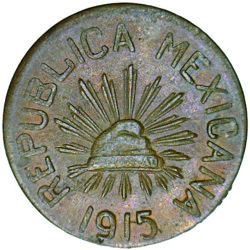
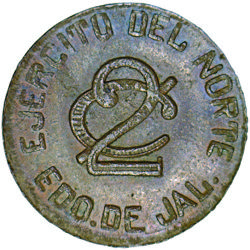
Variety 1 Large Cap & Long Rays Variety GB-240, A-JL 5 (thin planchet) or A-JL 6 (thick planchet)

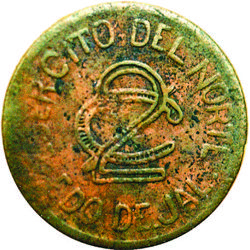
Variety 2 Medium Cap & Short Rays Variety GB-UNL, A-JL 8*
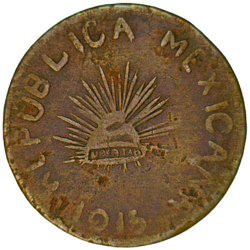
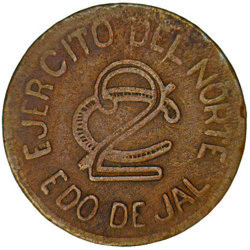
Variety 3 Small Cap and Short Rays GB-UNL, A-JL 9
All three varieties were struck in copper with a plain edge. There is no evidence that there were any struck in brass or with a reeded edge. All 2 centavos are basically the same approximate size in diameter (20mm), but weight varies from 3.00 grams to 5.50 grams due to the crude minting practices at the time which produced inconsistent size planchets. These are often times referred to as thin planchets or thick planchets depending on the weight.
The mintage for each variety is unknown as with most coins from the revolution. It is also not known which of the varieties was minted first. It seems most likely that Variety 3 came first since it is the crudest in quality and design of the three varieties. Variety 2 was probably minted about the same time; however, it has a much improved, more refined design than Variety 3. It is possible that Variety 2 and Variety 3 were early trial strikes or possibly crude, quickly designed early issues. Variety 1, more than likely, was the last to be produced since it shows the best quality and most refined design. It is also the most common in quantity of the three known varieties. I speculate that once the Guadalajara mint became fully functional, the die for Variety 1 was produced with more care and attention to the die details compared to what was seen in the other two varieties and became the primary die used for the 2 centavos issue. This die design is also more consistent in style and design with that used for the 1 centavo and 5 centavos Jalisco coins issued around the same time.
Analysis and Comparison of the 2 Centavos Obverse Die Varieties
Although there are numerous differences in the obverse dies of the three known varieties, it is the difference in the LIBERTAD lettering across the base of the cap which is the most easily recognizable while the rays at the base are the next noticeable.
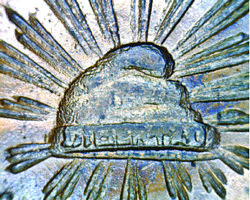
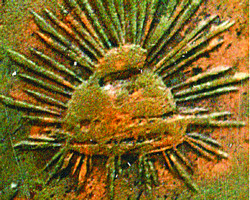
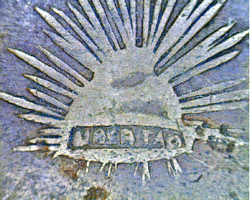
Variety 1 Variety 2* Variety 3
As mentioned previously, the legend letters and numerals in the date are different and can help highlight some of the variety differences. Legend letter and numeral sizes, spacing and position are inconsistent and rounded in shape on Variety 3, while the letters and numerals are more uniform in size, block style in shape with relatively consistent position and spacing on Varieties 1 and 2. These differences are easily seen on closer examination of the letters “B”, “C”, “M”, “P” and “R” while the differences in the date (1915) is most easily seen in the digits “9” and “5”.
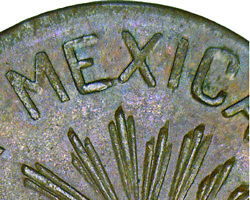
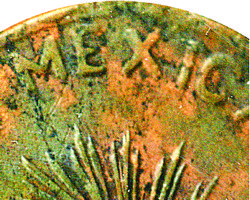
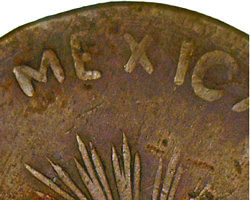
Variety 1 Variety 2* Variety 3

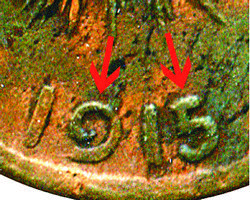
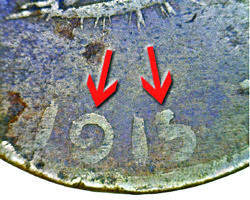
Variety 1 Variety 2* Variety 3
Analysis and Comparison of the 2 Centavos Reverse Die Varieties
Like the obverse, the reverse legend lettering is quite different between the three varieties. The reverse legend also has another feature to help distinguish the varieties. Variety 1 has a period after EDO and JAL, but missing after DE, thus shows as “EDO.DE JAL.”. Variety 2 is missing a period after EDO, but has one after DE and JAL, thus shows as “EDO DE.JAL.”. While Variety 3 has no periods after EDO, DE or JAL, thus shows as “EDO DE JAL ”.
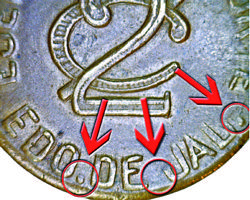
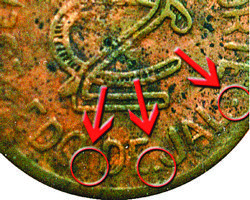
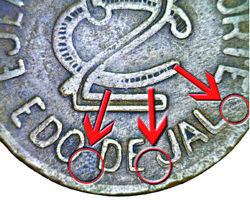
Variety 1 Variety 2* Variety 3
The letter “L” on Variety 1 reverse is different than Varieties 2 and 3. The “L” on Variety 1 has a small vertical notch at the back portion of the letter that is about half the length of the letter. This feature is missing on Varieties 2 and 3 where the letter looks like a normal capital “L”.
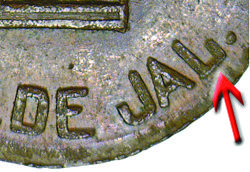
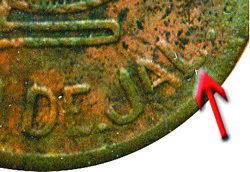
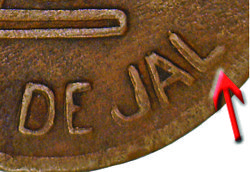
Variety 1 Variety 2* Variety 3
Like the letter “L”, the reverse Variety 1 has a similar feature on the denomination digit “2” which can be seen as a small vertical notch at the back portion of the digit. Varieties 2 and 3 do not have this feature.
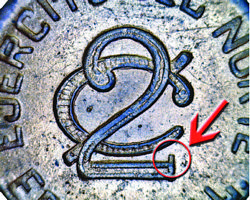
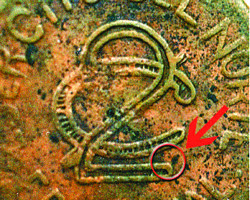
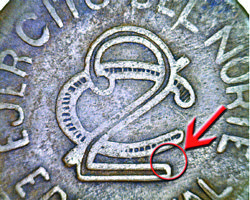
Variety 1 Variety 2* Variety 3
Varieties Rarity
Variety 1 (GB-240, A-JL 5 & A-JL 6) is a relatively common coin from the Mexican Revolution and can be easily found in online coin auctions and at dealers’ tables at coin shows for reasonable prices. These coins are usually seen in circulated condition; therefore expect to pay a premium for high grade and uncirculated specimens. On the other hand, Variety 2 (GB-UNL, A-JL 8) and Variety 3 (GB-UNL, A-JL 9) are rare coins and very seldom seen offered for sale in any condition.
